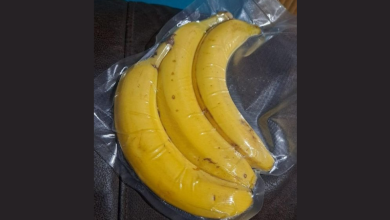A lack of sunlight shouldn’t stop you from having luscious, beautiful greenery in your home. Here are 15 of the best plants that don’t need sunlight for decorating your home.
Pro Tip: The darker the leaves, the more direct sunlight the plant will need. Choose a plant with a lighter leaf variety for darker rooms to prevent
1. Cast Iron Plant (Aspidistra elatior)

Cast Iron plants, as the name suggests, is a hardy plant. They can thrive in a wide variety of conditions, including low-light environments. In fact, keeping cast iron plants in direct sunlight can scorch and burn their leaves.
They are extremely slow to grow but require very little maintenance to keep them alive.
This makes them a perfect choice for busy or forgetful plant owners. Its rich green leaves are perfect for adding a natural touch of greenery to any room in the home.
Plus, they’re considered a pet-safe houseplant according to the ASPCA.
2. Dragon Tree (Dracaena)

The Dragon Tree, also known as Dracaena Marginata, is a very popular houseplant, and for good reason too.
It’s extremely durable, comes in many different sizes and varieties, and is perfect for low-light areas such as office spaces or living room corners.
The larger varieties such as the one shown in the picture above tend to have more of a tree-look and work well as floor decor, whilst the smaller varieties could easily fit on a shelf or tabletop.
Almost impossible to kill, and needing very little water, the dragon tree can thrive in most light conditions, including medium to low light environments. Direct sunlight, however, could scorch or damage the leaves.
3. Snake Plant (Sansevieria trifasciata)

The Snake Plant, also known as the Mother in Law’s Tongue, due to its sharp, pointy leaves not only looks great in any room but is great for forgetful plant owners. It’s great to decor your floor or tabletop.
Their visibly striped green and white leaves add a pop of color to any area of the home, especially the bedroom.
This plant has been shown in numerous studies such as this one by NASA to absorb carbon dioxide and release oxygen at night, perfect for a dimly lit bedroom.
The great news? Snake plants are one of the hardiest plants going, they can survive weeks of neglect. They can also tolerate a wide variety of light conditions, although they prefer, low indirect sunlight.
Snake plants only need watering around once a month, or when their soil is dry, as they are prone to rotting easily otherwise.
4. ‘ZZ’ Plant (Zamioculcasi)

The ZZ Plant is perhaps one of the hardiest plants around. Considered one of the hardest plants to kill, its lush foliage and bright green color can liven up any room in the home.
The ZZ plant thrives best in bright, indirect light, but can also tolerate low light conditions or even areas where there are no natural light sources.
The ZZ plant is also drought-resistant and very forgiving when it comes to ‘regular maintenance’; with this plant it’s better to forget watering it than watering it twice, making it a perfect addition to any forgetful owner’s home.
Water only when the potting soil is almost completely dry.
5. Monstera (Monstera deliciosa)

The monstera is often mistaken for the split-leaf philodendron.
Adding a vibrant pop of green to any home, the Monstera plant needs very little to no sunlight and can thrive in pretty much any light condition you throw at it.
Plus, according to this case study, it’s a natural air purifier, removing formaldehyde and other toxins from the air.
Its leaves grow big and wide, making it a viable option for wide-open spaces.
6. Silver Queen (Aglaonema)

Silver queens are a variant of evergreen plants, and due to their light green speckled leaves, naturally, prefer low light conditions.
Sensitive to the cold, this beautiful medium-sized plant is perfect for any indoor room.
Known to grow anywhere between 8 inches to 4 feet high, these plants can be found in most office or home spaces.
Bonus; silver queens are considered an extremely hardy and durable plant, making it a perfect choice for plant novices.
7. Sword Fern (Lomariopsidaceae)

Want to bring Jurassic Park into your indoor living space? The sword fern prefers conditions similar to its natural habitat; the jungle floor.
Like most ferns, the sword fern prefers a damp, low light, and earthy environment. Ideal for wet rooms and bathrooms where the humidity is high.
Its luscious green leaves and prehistoric look may this indoor houseplant extremely popular.
You’ll also be glad to know that this plant is perhaps one of the *easiest* plants to care for. They also love acidic soil, so will need a quick spray of fertilizer now and then.
8. Dumb Cane (Dieffenbachia)

Searching for a taller indoor plant that needs little to no sunlight? Dumb Cane’s are gorgeous plants that are often found adorning both home and office spaces.
They are called ‘dumb canes’ due to their poisonous nature; all parts of the plant are toxic to both pets and children so it’s best to keep them away from this plant.
If it’s poisonous, why is it so popular? Good question.
Dumb cane is popular due to its stunning, striped leaves and it’s prized for its ability to grow up to 5 feet tall.
Dumb canes can thrive in low light areas, preferring somewhere between high and low filtered light.
Filtered light simply means the light is passing through a sheer curtain or similar material. Most varieties, however, can thrive on low filtered light alone.
9. Peace Lily (Spathiphyllum)

Contrary to popular belief, peace lilies are not true lilies. The white ‘petal’ that you see is in fact a leaf bract that grows around the yellow bud.
They can flower a few times a year, and look ever so pretty in an office and home environment.
Peace lilies thrive in medium to low light conditions, and can even survive under fluorescent light only. If you’re looking for an indoor houseplant plant that requires little maintenance, this could be the right one for you.
They need very little water, are considered hard to kill, and are great at purifying the air.
Make sure to keep this plant away from pets or children, it produces a chemical irritant that can cause swelling, inflammation, and skin rashes.
10. Zebra Cactus (Haworthia attenuate)

Named for its striking black and white stripes, the Zebra cactus is succulent that is fairly sensitive to cold temperatures, needs little water, and blooms beautiful white-brown flowers in the summer months.
The Zebra Cactus is another dead easy plant to care for and adds a touch of color to any area of the home.
These look especially good in an arrangement on a bedroom shelf or desk.
They can thrive in low light conditions, but may occasionally need to be moved to a medium-light environment to prevent yellowing leaves.
11. Peacock Plant (Calathea makoyana)

The Peacock Plant goes by many aliases, including Rattlesnake Plant and Cathedral Windows. It has gorgeous, broad leaves with distinctive patterns of dark and light green that shimmer and shift with the breeze. The Peacock Plant requires some occasional TLC, so it does best in more experienced hands.
Place your plants in medium to low light. Overexposure to sunlight can result in damaged leaves, so keep an eye out for pale marks.
Peacock Plants like humid conditions, so keep the soil moist. Water them with rainwater or distilled water rather than tap water.
12. Dracaena (Dracaena fragrans)

The Dracaena is one of the more common houseplants for low light you’ll encounter. The plants are attractive, with slender, green-and-yellow leaves.
You’ll find Dracaena varieties on tables, desks, windowsills, and shelves all over the world. Best of all, Dracaenas are some of the best air purifying plants around.
Keep your Dracaenas in bright but indirect natural light for best results. However, avoid direct sunlight. Dracaenas are happy to grow in lower light conditions if need be, as well. Let your Dracaena soil dry almost completely before watering again.
13. Spider Plant (Chlorophytum comosum)

The Spider Plant is also called the Air Plant, and it lives up to that name. This low-light plant happily eats airborne pollutants, including formaldehyde and xylene. The Spider Plant also takes care of bad odors, which makes it an ideal choice for bathrooms, garages, or other areas with strong smells.
Keep your Spider Plant in bright light for the best results, but it will do fine in lower light conditions if necessary. Make sure to keep your plant watered, as Spider Plants tend to lose moisture at a rapid clip.
14. Creeping Fig (Ficus pumila)

The Creeping Fig, also called Creeping Ficus, Fig Ivy, and Climbing Fig is a fantastic ground cover for poorly lit areas. It grows quickly and easily, and it works equally well as a hanging plant or outdoor decoration. Creeping Fig plants are a solid choice for folks who want attractive foliage in low-light conditions.
These easy climbing plants prefer indirect, bright light and will reward you with brightly colored leaves that grow prolifically. Keep on top of watering with the Creeping Fig, as the plant dries out quickly. Once the top of the soil dries out, water the plant again. Fertilize the plant about once a month in the summer and spring.
15. Golden Pothos (Epipremnum aureum)

The Golden Pothos, also known as Devil’s Ivy or Money Plant, is native to Southeast Asia and is a fantastic choice for a low-light hanging plant. When you have a Golden Pothos in your home, you have a plant that grows like a champ in adverse light conditions. And, you also get one of the better natural carbon monoxide scrubbers around.
The Golden Pothos does best in bright, indirect sunlight. You can put it in darker areas without harming it, though. You’ll need to keep your Golden Pothos leaves pruned to keep the plant from taking over whatever space it inhabits.
We hope you can find the perfect plants that don’t need sun for your home.







